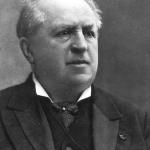Philip Gorski’s American Covenant examines the American tradition of civil religion or civic republicanism from the Puritans through President Obama. Gorski contrasts this tradition with the two most belligerent contenders in contemporary American politics, religious nationalism and radical secularism.
Civil religion differs from radical secularism in its anthropology (communitarian rather than individualist) and its comfort with religion in public life (against secular “separationism,” civil religion recognizes an unavoidable overlap of religion and politics). It differs from religious nationalism in its willingness to draw on secular sources, its preference for the prophetic portions of the Bible, its hostility to moralism, its resistance to political uses of blood sacrifice, conquest narratives, and apocalypticism. Religious nationalism is idolatry, worship of the nation and its “basic formula” has been “apocalyptic politics plus the conquest narrative” (19).
Gorski recognizes that “civil religion can quickly devolve into religious nationalism,” if it draws on conquest stories and blood rhetoric: “Religious nationalism is the dark side of civil religion” (35). His argument is inspired by Robert Bellah, but he worries that Bellah did not sufficiently distinguish religious nationalism from civil religion, and so laid himself open to the (unfair) objection that he promoted “national self-worship” (17).
Gorski sets things up to his own advance, of course. Two extremes—secularism and idolatry—with his own position occupying the moderate, reasonable middle. Its basic formula is “prophetic religion plus civic republicanism, or, more succinctly, prophetic republicanism” (19).
It’s an attractive tradition, and a long-standing one. Its rhetoric tends toward the jeremiad, which builds in an element of humility and self-critique; its an explicitly religious tradition (not, for instance, a public philosophy), which means it fits the ethos of America. Yet it’s not clear exactly how this tradition can avoid what Gorski thinks of as its dark side. He presents civil religion as a unifying philosophy that can have secular as well as religious adherents. For secularists, “civil religion may be religious only in a historical or literary sense” (15). Secularists, that is, acknowledge that the tradition of civic republicanism draws inspiration and its rhetorical habits from the Bible, even though they don’t believe the Bible. For religious Americans, civil religion has theological and ethical warrants rooted in Scripture and Christian tradition.
In any case, what unites the secular and religious American in civil religion is a common adherence to America. That may be a modest and self-critical form of religious nationalism, but it is a form of religious nationalism nonetheless, united in common devotion to the nation.
Gorski cites David Foster Wallace’s famous statement about worship: We cannot avoid worshiping something, and the only question is what we worship. It’s the question that must be posed to Gorski and all advocates of civil religion: What is the object of worship? Civil religion “insists that there are no gods among us, nothing human or material that deserves our worship” (224).
True enough, but then what does? And are We the People united in any common object of worship? If it’s not the Christian God—and it cannot be on Gorski’s premises—then what God is it? One has the faint suspicion that America or the American creed is the closest thing civil religion has to an object of worship. And that means that the slope leading to religious nationalism is shorter and steeper than Gorski admits.















